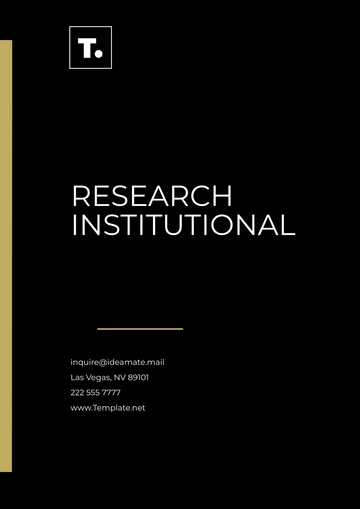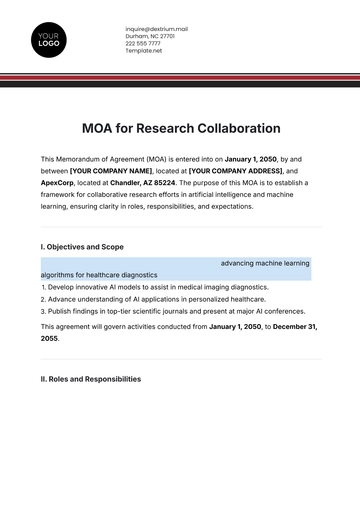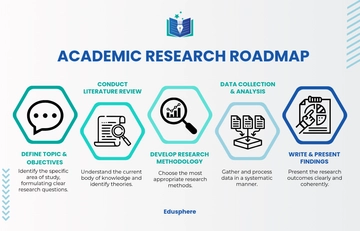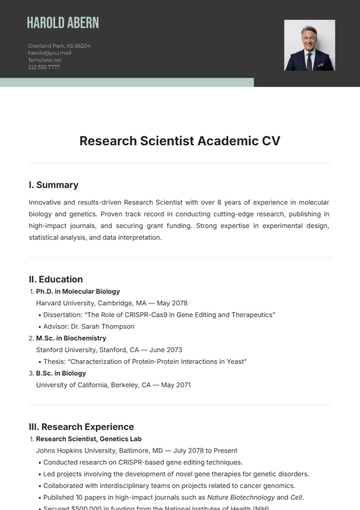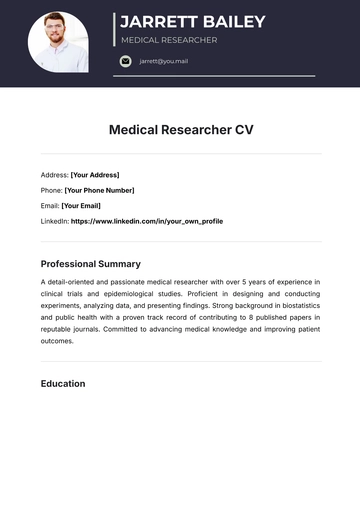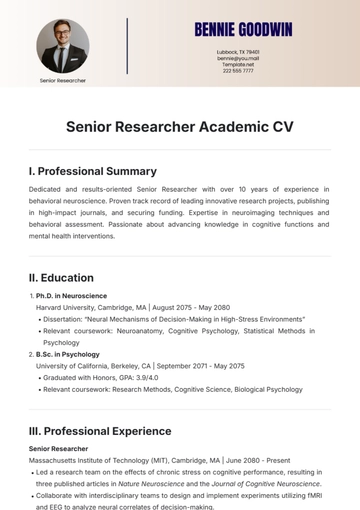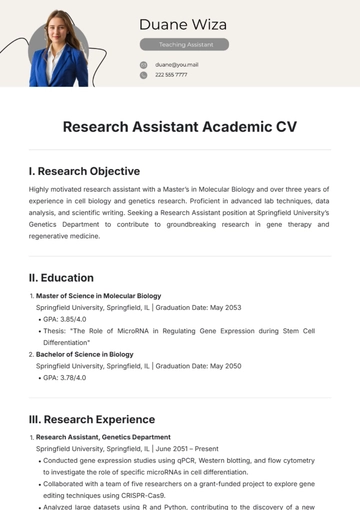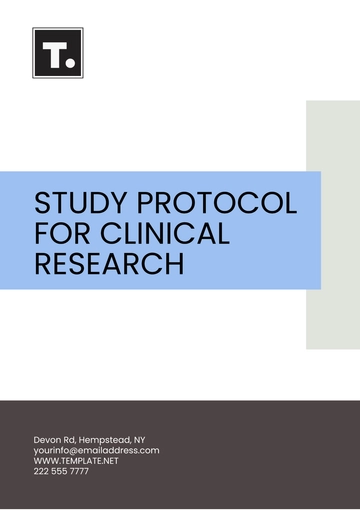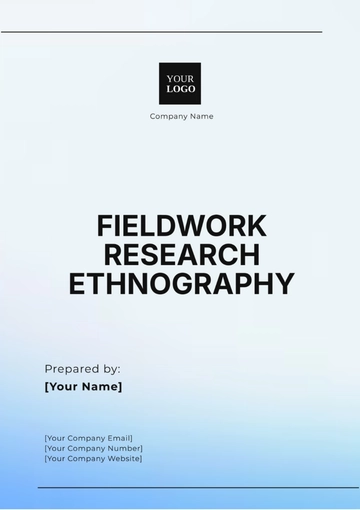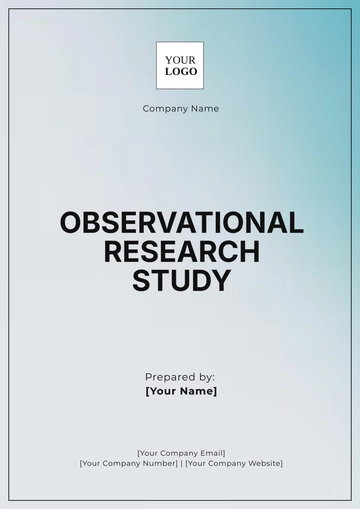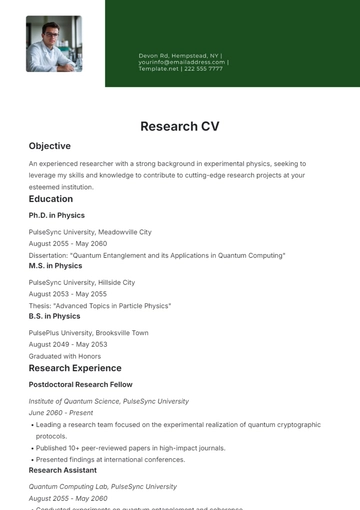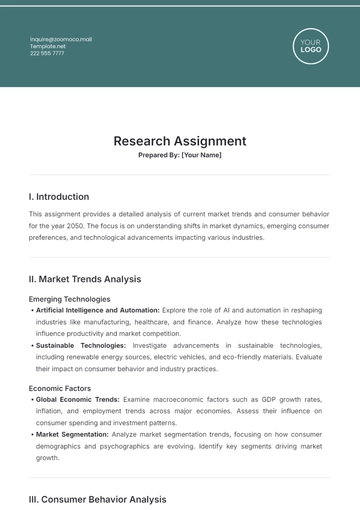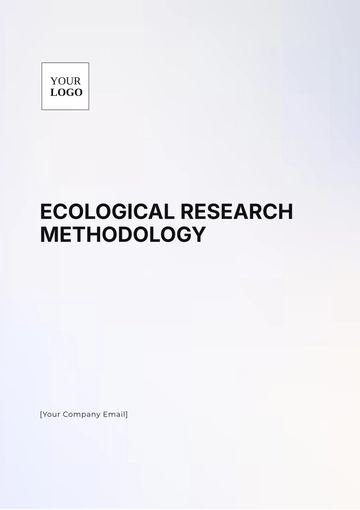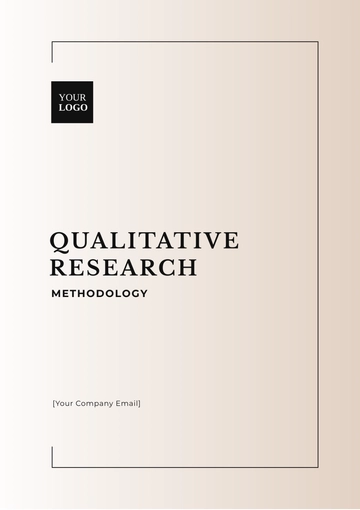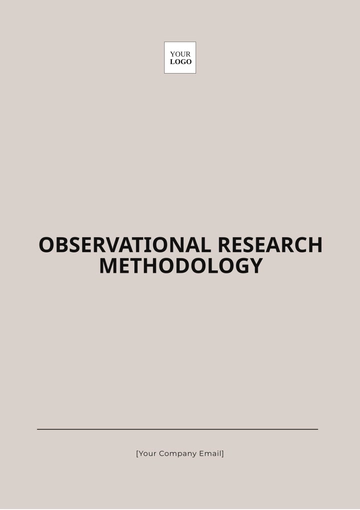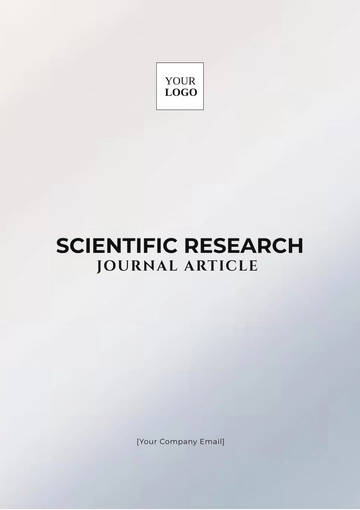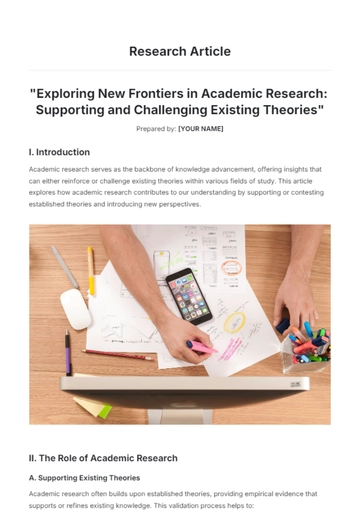Free Marketing Research Brief
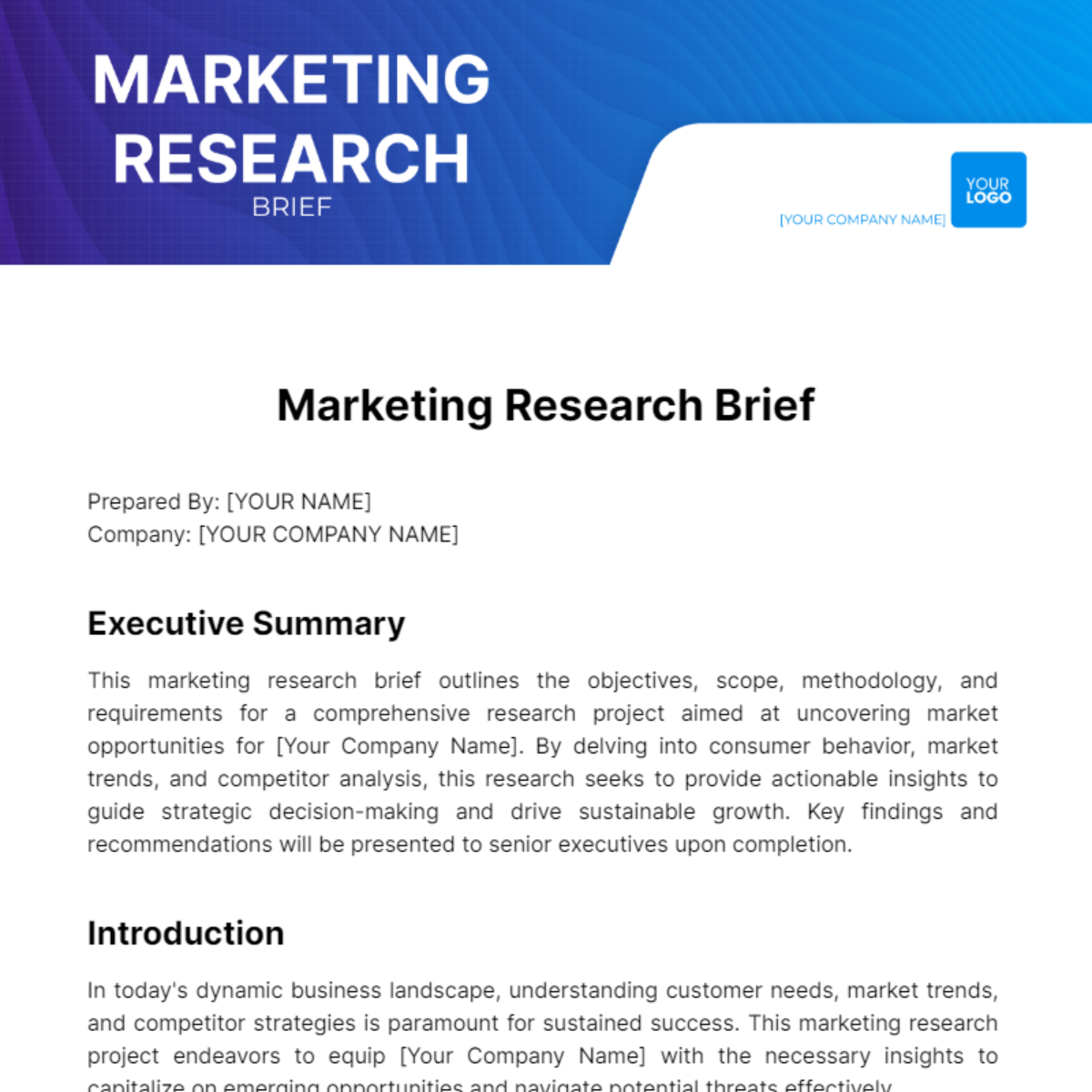
Prepared By: [YOUR NAME]
Company: [YOUR COMPANY NAME]
Executive Summary
This marketing research brief outlines the objectives, scope, methodology, and requirements for a comprehensive research project aimed at uncovering market opportunities for [Your Company Name]. By delving into consumer behavior, market trends, and competitor analysis, this research seeks to provide actionable insights to guide strategic decision-making and drive sustainable growth. Key findings and recommendations will be presented to senior executives upon completion.
Introduction
In today's dynamic business landscape, understanding customer needs, market trends, and competitor strategies is paramount for sustained success. This marketing research project endeavors to equip [Your Company Name] with the necessary insights to capitalize on emerging opportunities and navigate potential threats effectively.
Objective
The primary objective of this research is to conduct a comprehensive analysis aimed at identifying and evaluating market opportunities within the [specific market segment or industry] landscape. This analysis will serve as a crucial foundation to inform strategic decision-making processes and enhance [Your Company Name]'s competitive positioning within the marketplace. The specific objectives of this research include:
Identifying Unmet Customer Needs and Preferences:
Through in-depth market research methodologies, we aim to understand the evolving needs, preferences, and pain points of our target customers within the [specific market segment or industry]. By identifying gaps between existing offerings and customer expectations, we can uncover potential opportunities for innovation and differentiation.
Assessing Market Trends and Dynamics:
By analyzing current market trends, industry dynamics, and emerging consumer behaviors, we seek to gain a holistic understanding of the macroeconomic factors shaping the [specific market segment or industry]. This analysis will enable us to anticipate market shifts, identify growth opportunities, and adapt our strategies accordingly.
Analyzing Competitor Strategies and Market Positioning:
Through competitive analysis and benchmarking, we aim to gain insights into the strategies, strengths, and weaknesses of key competitors operating within the [specific market segment or industry]. Understanding competitor positioning, product offerings, pricing strategies, and marketing tactics will help us identify areas where we can differentiate ourselves and capture market share.
Exploring Potential Product or Service Innovations:
This research will focus on exploring potential areas for product or service innovation within the [specific market segment or industry]. By closely examining customer feedback, market trends, and technological advancements, we aim to identify unexplored opportunities for new product development or enhancements to existing offerings.
Evaluating the Feasibility and Potential Impact of Identified Opportunities:
Once potential market opportunities have been identified, we will conduct a thorough feasibility analysis to assess their viability and potential impact on [Your Company Name]'s business objectives. This analysis will consider factors such as market size, growth potential, resource requirements, regulatory constraints, and potential risks.
Scope
The scope of this research encompasses:
Scope | Details |
|---|---|
Geographic focus | Metropolitan areas in the United States such as New York City, Los Angeles, Chicago, Houston |
Demographic focus | Adults aged 18-45, middle to high-income, with an emphasis on early adopters and trendsetters |
Product/Service Focus | Smart home technology including smart thermostats, lighting systems, home security devices, and subscription-based home automation services |
Timeframe | January 1, 2022, to December 31, 2050 |
Target Audience
This research is specifically targeted towards the following groups within [Your Company Name]:
Senior Executives:
CEO, CMO, COO, CFO
Responsible for setting strategic direction
Utilize insights for decision-making
Marketing Strategists:
Marketing managers, directors, strategists
Develop and execute marketing campaigns
Refine strategies, identify new segments
Product Developers:
Product managers, designers, developers
Conceptualize, create, and launch products
Use insights for product development
Other Relevant Stakeholders:
Sales managers, business development professionals, research analysts, finance managers
Contribute to strategic decision-making
Benefit from research insights in respective roles
Methodology
The research methodology is designed to provide a comprehensive understanding of market opportunities through a combination of qualitative and quantitative methods. Each method is carefully chosen to ensure robust data collection and analysis.
Primary Research:
Surveys: A structured questionnaire will be developed to gather quantitative data from target customers. The survey will cover aspects such as preferences, purchasing behavior, and satisfaction levels.
Interviews: In-depth interviews will be conducted with key stakeholders, including existing customers, potential customers, and industry experts. These interviews will provide qualitative insights into customer needs, pain points, and perceptions.
Focus Groups: Small group discussions will be organized to facilitate interactive conversations among participants. Focus groups will delve deeper into specific topics, allowing for a nuanced understanding of consumer attitudes and preferences.
Secondary Research:
Market Reports: Existing market reports from reputable sources will be analyzed to understand market trends, size, growth potential, and competitive landscape.
Industry Publications: Relevant industry publications, journals, and academic papers will be reviewed to gain insights into emerging technologies, regulatory changes, and industry best practices.
Competitor Analysis: A comprehensive analysis of competitors will be conducted to assess their strategies, strengths, weaknesses, product offerings, and market positioning. This will involve gathering information from public sources, such as website reports, and press releases.
Data Analysis:
Statistical Analysis: Quantitative data collected through surveys will be analyzed using statistical techniques such as regression analysis, correlation analysis, and hypothesis testing to identify patterns, relationships, and trends.
Trend Identification: Qualitative data from interviews and focus groups will be analyzed thematically to identify recurring themes, emerging trends, and potential market opportunities.
Competitive Benchmarking: Comparative analysis will be conducted to benchmark [Company Name] against competitors across various dimensions, including product features, pricing strategies, distribution channels, and marketing tactics.
Timeline
The research project is estimated to be conducted over 12 weeks, commencing on April 1, 2050, and concluding on June 24, 2050. The timeline is subject to adjustment based on project milestones and feedback from stakeholders. Key milestones and deadlines within this timeline include:
Timeline Week | Activities |
|---|---|
April 1-7, 2050 | Project kickoff meeting and finalization of research objectives and scope. |
April 8-21, 2050 | Primary research phase, including survey design, participant recruitment, and data collection. |
April 22-28, 2050 | Initial data analysis and synthesis of primary research findings. |
April 29 - May 12, 2050 | The secondary research phase focuses on market trends, competitor analysis, and industry reports. |
May 13-19, 2050 | Continued data analysis and integration of secondary research insights. |
May 20 - June 2, 2050 | Synthesis of primary and secondary research findings to identify key market opportunities. |
June 3-9, 2050 | Drafting of the comprehensive research report and development of presentation materials. |
June 10-16, 2050 | Review and refinement of research report and presentation based on feedback from stakeholders. |
June 17-23, 2050 | Finalization of research deliverables and preparation for presentation to senior executives. |
June 24, 2050 | Presentation of research findings and recommendations to senior executives. |
Budget
The estimated budget for this research project is $100,000. This allocation will cover the following expenses:
Research Tools: $20,000
Acquisition of specialized research tools and software for data collection and analysis.
Participant Incentives: $15,000
Compensation for survey participants, interviewees, and focus group attendees to encourage participation and ensure representative data.
Data Analysis Software: $10,000
Licensing fees for advanced data analysis software to facilitate in-depth analysis and interpretation of research findings.
Travel and Accommodation: $10,000
Reimbursement for travel expenses incurred by research team members conducting fieldwork or attending industry events related to the research objectives.
Research Personnel: $25,000
Salaries or consulting fees for research analysts, statisticians, and other personnel involved in data collection, analysis, and reporting.
Miscellaneous Expenses: $20,000
Miscellaneous expenses such as printing costs, communication expenses, and contingency funds to address unforeseen circumstances during the research project.
Total Budget: $100,000
Deliverables
The deliverables of this research project will include:
Comprehensive Research Report:
The research report will be a detailed document presenting the key findings, analysis, and recommendations derived from the research activities. It will include:
Executive summary: A concise overview of the research objectives, methodology, and key findings.
Market analysis: In-depth examination of market trends, dynamics, and potential opportunities.
Consumer insights: Analysis of consumer behavior, preferences, and unmet needs.
Competitor analysis: Evaluation of competitor strategies, strengths, and weaknesses.
Recommendations: Actionable insights and strategic recommendations based on the research findings.
Appendices: Additional supporting information, such as survey questionnaires, interview transcripts, and data tables.
Presentation to Senior Executives:
A professionally crafted presentation will be delivered to senior executives, summarizing the key insights and actionable recommendations from the research project. The presentation will include:
Overview of research objectives and methodology.
Highlights of key findings and implications for strategic decision-making.
Discussion of actionable recommendations and proposed next steps.
Opportunities for interactive discussion and Q&A with senior executives.
Visual aids such as charts, graphs, and visuals enhance understanding and engagement.
Supporting Materials:
Datasets: Raw data collected during the research process, including survey responses, interview transcripts, and other relevant data sources.
Charts and Visuals: Visual representations of data analysis findings, including charts, graphs, and infographics, to aid in understanding and interpretation.
Additional documentation: Any supplementary materials deemed relevant to the research findings and recommendations, such as industry reports, academic articles, or market analyses.
Stakeholders
Key stakeholders involved in this project include:
Senior Executives:
Role: Responsible for strategic decision-making and providing guidance on overall business direction.
Involvement: Will review research findings and recommendations to inform high-level strategic planning and resource allocation.
Marketing Team:
Role: Responsible for developing and implementing marketing strategies to promote products/services and attract customers.
Involvement: Will collaborate closely with the research team to ensure alignment between research insights and marketing initiatives.
Product Development Team:
Role: Responsible for conceptualizing, designing, and launching new products/services or improving existing offerings.
Involvement: Will leverage research findings to inform product development decisions, including feature enhancements or new product concepts.
Research Analysts:
Role: Responsible for conducting data collection, analysis, and interpretation to derive actionable insights.
Involvement: Will lead the research activities outlined in the brief, including designing research instruments, collecting data, and analyzing results.
External Research Partners (if applicable):
Role: External agencies or consultants engaged to provide specialized expertise or resources for the research project.
Involvement: Will collaborate with internal teams to execute specific research tasks, such as conducting surveys, focus groups, or market analysis.
Risks and Limitations
Potential risks and limitations associated with this research project include:
Sampling Bias: The method of selecting participants may inadvertently favor certain demographics or exclude key segments, limiting the generalizability of findings. Strategies to mitigate this risk include diversifying sampling techniques and ensuring adequate sample sizes.
Data Accuracy: Reliance on secondary data sources may introduce inaccuracies or outdated information, compromising the reliability of findings. To address this, rigorous validation procedures will be implemented, prioritizing recent and credible sources.
Time Constraints: Limited timeframes may restrict the depth and breadth of research activities, potentially hindering thorough data collection and analysis. Efficient project management practices and clear task prioritization will be employed to optimize resource utilization and ensure timely completion.
Competitive Sensitivity: Disclosure of sensitive competitor information may pose risks of information leakage or legal implications. To mitigate this, ethical guidelines and legal regulations will be strictly followed, including the use of confidentiality agreements and regular reviews of competitive intelligence practices.
Ethical Considerations
In this research project, ethical considerations are paramount to ensure the integrity and fairness of our data collection and analysis processes. Specific measures to address ethical considerations include:
Ensuring Participant Confidentiality and Data Privacy:
All data collected from research participants will be treated with the utmost confidentiality.
Personal identifying information will be anonymized or pseudonymized to protect participant privacy.
Data storage and handling procedures will comply with relevant data protection regulations, such as GDPR or CCPA.
Obtaining Informed Consent from Research Participants:
Before engaging in any data collection activities, participants will be provided with clear and comprehensive information about the research objectives, procedures, and potential risks.
Informed consent will be obtained from all participants, indicating their voluntary agreement to participate in the research.
Participants will have the right to withdraw from the research at any time without penalty.
Avoiding Conflicts of Interest in Data Interpretation and Reporting:
Data interpretation and reporting will be conducted with impartiality and objectivity, free from any undue influence or bias.
Any potential conflicts of interest, such as financial or personal relationships with stakeholders or competitors, will be disclosed and managed transparently.
Findings and recommendations will be based solely on the merits of the data and analysis, with no undue influence from internal or external parties.
- 100% Customizable, free editor
- Access 1 Million+ Templates, photo’s & graphics
- Download or share as a template
- Click and replace photos, graphics, text, backgrounds
- Resize, crop, AI write & more
- Access advanced editor
Introducing the Marketing Research Brief Template from Template.net: your essential tool for strategic insights. This editable and customizable template streamlines the marketing research process, ensuring precision and efficiency. Tailor every detail effortlessly with our Ai Editor Tool, perfecting it to your project's needs. Simplify research and elevate your marketing strategies with ease, exclusively on Template.net.






